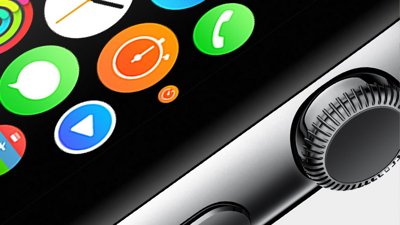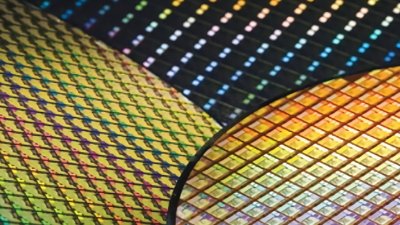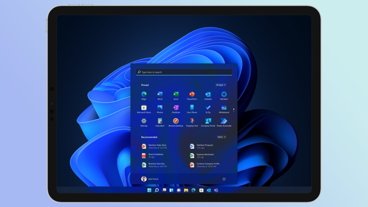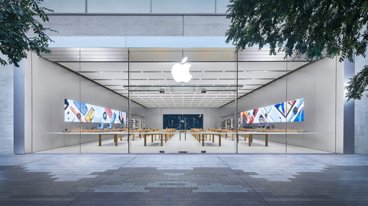Featuring what Amazon calls a "split browser" architecture, the "cloud-accelerated" Silk uses Amazon Web services to offer a faster Web browsing experience. The Silk software resides on both the new Kindle Fire, as well as Amazon's servers.
Silk utilizes Amazon's Elastic Compute Cloud, or "EC2," which sports latency of 5 milliseconds or less to most websites, rather than the 100 milliseconds seen through most wireless connections. Silk is said to dynamically divide labor between the local Kindle Fire and the cloud-based EC2, taking into consideration factors like network conditions, page complexity and the location of any cached content.
"We refactored and rebuilt the browser software stack and now push pieces of the computation into the AWS cloud," Amazon.com founder and CEO Jeff Bezos said. "When you use Silk — without thinking about it or doing anything explicit — you're calling on the raw computational horsepower of Amazon EC2 to accelerate your web browsing."
Amazon noted that constructing cnn.com requires 161 files served from 25 unique domains, representing the complexity of modern websites. An average website is said to require 80 files served from 13 different domains.
Combined with high latency over wireless connections, this can lead to long load times for websites. Amazon says its new Silk browser solves this by sharing the load between the Kindle Fire and its servers.
The retailer noted that many top websites are hosted on Amazon's own EC2 servers, meaning that many website requests will never leave the extended infrastructure of Amazon Web Services.
"If hundreds of files are required to build a web page across dozens of domains, Silk can request all of this content simultaneously with EC2, without overwhelming the mobile device processor or impacting battery life," the company said.
Amazon Silk keeps a persistent connection open to EC2, which in turn also maintains a connection to the top sites on the Web. Similar to Amazon's recommended products on its website, Silk "learns more about the individual sites it renders and where users go next."
"By observing the aggregate traffic patterns on various web sites, it refines its heuristics, allowing for accurate predictions of the next page request," Amazon said. "For example, Silk might observe that 85 percent of visitors to a leading news site click on that site's top headline.
"With that knowledge, EC2 and Silk together make intelligent decisions about pre-pushing content to the Kindle Fire. As a result, the next page a Kindle Fire customer is likely to visit will already be available locally in the device cache, enabling instant rendering to the screen."
The Amazon Silk browser is a feature exclusive to the new Kindle Fire announced on Wednesday. The color touchscreen tablet aims to compete with Apple's iPad with an aggressive $199 price, and will begin shipping on Nov. 15.
 Slash Lane
Slash Lane








-m.jpg)






 Amber Neely
Amber Neely
 Malcolm Owen
Malcolm Owen
 William Gallagher
William Gallagher

 Christine McKee
Christine McKee







-m.jpg)



72 Comments
So Silk uses the Amazon cloud as a proxy that downsamples and caches content. This could open things up for Amazon to modify web sites as in inject their own ads into other sites based on content and other Goggle ad type of processes for their own benefit. Not to sat they will, but they could to support their free cloud and reduced hardware price.
As part of the Kindle Fire unveiling on Wednesday, Amazon announced its new browser architecture, dubbed Silk, which does some processing and rendering in the cloud to speed up Web browsing.
Featuring what Amazon calls a "split browser" architecture, the "cloud-accelerated" Silk uses Amazon Web services to offer a faster Web browsing experience. The Silk software resides on both the new Kindle Fire, as well as Amazon's servers.
Silk utilizes Amazon's Elastic Compute Cloud, or "EC2," which sports latency of 5 milliseconds or less to most websites, rather than the 100 milliseconds seen through most wireless connections. Silk is said to dynamically divide labor between the local Kindle Fire and the cloud-based EC2, taking into consideration factors like network conditions, page complexity and the location of any cached content.
"We refactored and rebuilt the browser software stack and now push pieces of the computation into the AWS cloud," Amazon.com founder and CEO Jeff Bezos said. "When you use Silk -- without thinking about it or doing anything explicit -- you're calling on the raw computational horsepower of Amazon EC2 to accelerate your web browsing."
Amazon noted that constructing cnn.com requires 161 files served from 25 unique domains, representing the complexity of modern websites. An average website is said to require 80 files served from 13 different domains.
Combined with high latency over wireless connections, this can lead to long load times for websites. Amazon says its new Silk browser solves this by sharing the load between the Kindle Fire and its servers.
The retailer noted that many top websites are hosted on Amazon's own EC2 servers, meaning that many website requests will never leave the extended infrastructure of Amazon Web Services.
"If hundreds of files are required to build a web page across dozens of domains, Silk can request all of this content simultaneously with EC2, without overwhelming the mobile device processor or impacting battery life," the company said.
Amazon Silk keeps a persistent connection open to EC2, which in turn also maintains a connection to the top sites on the Web. Similar to Amazon's recommended products on its website, Silk "learns more about the individual sites it renders and where users go next."
"By observing the aggregate traffic patterns on various web sites, it refines its heuristics, allowing for accurate predictions of the next page request," Amazon said. "For example, Silk might observe that 85 percent of visitors to a leading news site click on that site's top headline.
"With that knowledge, EC2 and Silk together make intelligent decisions about pre-pushing content to the Kindle Fire. As a result, the next page a Kindle Fire customer is likely to visit will already be available locally in the device cache, enabling instant rendering to the screen."
The Amazon Silk browser is a feature exclusive to the new Kindle Fire announced on Wednesday. The color touchscreen tablet aims to compete with Apple's iPad with an aggressive $199 price, and will begin shipping on Nov. 15.
[ View this article at AppleInsider.com ]
Bring on the lawsuits from Samsung et al
Silk's logging of user browser patterns could set up Amazon as a potential competitor to Google. Or, the HW and OS isn't strong enough to support a native browser.
Nothing new here, people. "Split browsing" has existed since the days of WAP browsers...remember those? Back in the 1990s.
I'm not certain this will be a success (I can imagine lots of issues with funnelling millions of Web requests through Amazon's infrastructure and site compatibility issues, for example), but I have to give them credit for trying something like this. You can tell they are trying to take many pages from Apple's playbook on this: with the exception of the font, that video is very much like the new product video Apple posts to their site; they are focusing on the "it just works" aspect; they are introducing a "proprietary" solutution--SILK is only on Fire for now; etc. All in all, they are demonstrating a willingness and ability to be innovative. Now they have to execute.